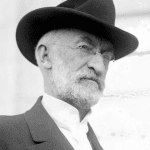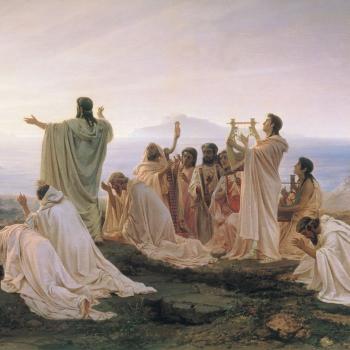
I’ve begun to read Chris Ferrie and Geraint F. Lewis, Where Did the Universe Come From? And Other Cosmic Questions: Our Universe, from the Quantum to the Cosmos (Naperville IL: Sourcebooks, 2021) — a relatively brief book with a very long title. Chris Ferrie is a physicist and an associate professor of quantum software and information at the University of Technology Sydney; Geraint F. Lewis is a professor of astrophysics at the Sydney Institute for Astronomy.
Here is a quintet of the passages from the book that have caught my notice thus far. The common theme, I suppose, is that our current science appears to be up against a limit. One might almost call it a “veil”:
By the end of the nineteenth century, it looked like the end might be in sight. The great Lord Kelvin is rumored to have said that there was “nothing new to be learned in science,” and all that was left to do was to make measurements at higher and higher precision. (2)
But then, of course, within just a few short years Max Planck launched quantum mechanics and Albert Einstein published first his special theory of relativity and then his general theory of relativity. Quantum theory and relativity theory were both utterly and profoundly revolutionary. Science, it turned out, wasn’t finished after all.
While people have looked into the skies for meaning from the earliest beginnings of humanity, cosmology has only become a true science over the last century. Advances in telescopes have opened up the heavens, revealing a universe much larger and richer than we could have ever imagined. Our Sun is one star of hundreds of billions in the Milky Way galaxy, whose light shines across the sky from horizon to horizon. And the Milky Way is just one of possibly trillions of galaxies visible to our most powerful telescopes. (21-22)
While Einstein’s general relativity led us to the Big Bang, we need more physics to describe the complex interactions underway when the universe was immensely hot and dense. As well as the intense pull of gravity [which is accounted for in general relativity -dcp], the vigorous collisions between the basic building blocks of matter, elementary particles like electrons and quarks, mean we cannot neglect the other fundamental forces: electromagnetism, the strong force, and the weak force. We will revisit these forces numerous times in this book, but for now, all we need to know is that each of these three phenomena is described by the laws and language of quantum mechanics.
In the earliest stages of the universe, gravity and the other forces were vying for dominance. In describing the universe, neither quantum mechanics nor general relativity can be ignored. Both must be used on an equal footing. But we don’t quite know how to reconcile these two distinct frameworks in a way that brings them together seamlessly.
To explore the earliest stages of the universe, we have to stick the various bits of mathematics together in a rather haphazard way in an attempt to join the four fundamental forces (gravity, electromagnetism, strong force, and weak force) into something we think — we hope — works.
There is more than one way of sticking the pieces of mathematics together, and we don’t really know if any approach is a good approximation of reality in the extreme conditions of the earliest epochs of the universe. Eventually, we reach a point, peering back earlier into the history of the universe, where we know this Frankenstein mathematics simply cannot work. We end up stuck, facing a wall in our physical theories and unable to explore any further. This prevents us from revealing the mechanics of the birth of our universe and answering the fundamental question where did the universe come from? (24-25)
Even in the time it takes you to say the word nothing, a lot can happen in the timescales as measured by the early universe. The first era of the universe, as we currently understand it, lasted only about 10^-43 seconds. That is 0.00, followed by forty more zeros, then a 1. That is:
0.0000000000000000000000000000000000000000001
An unimaginably small chunk of time. What can we compare this to? How can we, as humans, get a sense of such a small scale? Frustratingly, the answer is we can’t. This amount of time is much, much smaller than any of our current theories of physics can explore. (30)
Why can’t we see the Big Bang itself? After the first few minutes of the universe’s existence, minutes that saw the formation of the first atomic nuclei, the universe was still extremely hot, with electrons zipping through the soup of matter and radiation. These high-speed electrons were moving too fast to join an atomic nucleus to create the atoms we know today. Instead, the universe was full of plasma, with free electrons jostling with light rays, making it opaque. After about 380,000 years of cosmic time, the universe was cool enough and the electrons slow enough for them to stick to the atomic nuclei. In a moment, the universe became transparent.
Once the universe was transparent, light could travel freely across the universe and to our telescopes. But trying to peer more deeply into the universe, into the time when it was opaque, is like trying to stare through a brick wall. (38-39)
It seems obvious to me that we ought to approach such topics not only with our best scientific thinking and our deepest reflection but with an attitude of awe and humility.
O Lord, our Lord, how excellent is thy name in all the earth! who hast set thy glory above the heavens. . . . When I consider thy heavens, the work of thy fingers, the moon and the stars, which thou hast ordained; What is man, that thou art mindful of him? and the son of man, that thou visitest him? (Psalm 8:1, 3-4)













